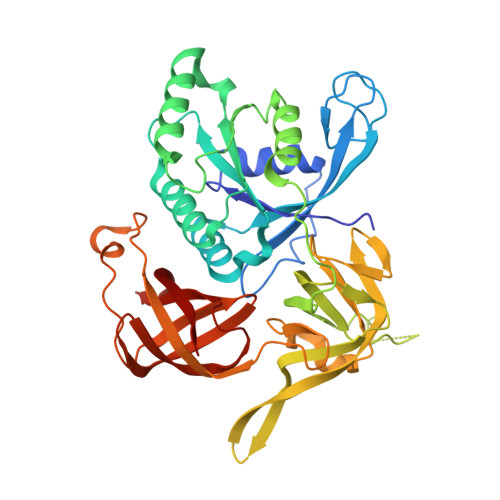The large subunit of initiation factor aIF2 is a close structural homologue of elongation factors.
Schmitt, E., Blanquet, S., Mechulam, Y.(2002) EMBO J 21: 1821-1832
- PubMed: 11927566
- DOI: https://doi.org/10.1093/emboj/21.7.1821
- Primary Citation of Related Structures:
1KJZ, 1KK0, 1KK1, 1KK2, 1KK3 - PubMed Abstract:
The heterotrimeric factor e/aIF2 plays a central role in eukaryotic/archaeal initiation of translation. By delivering the initiator methionyl-tRNA to the ribosome, e/aIF2 ensures specificity of initiation codon selection. The three subunits of aIF2 from the hyperthermophilic archaeon Pyrococcus abyssi could be overproduced in Escherichia coli. The beta and gamma subunits each contain a tightly bound zinc. The large gamma subunit is shown to form the structural core for trimer assembly. The crystal structures of aIF2gamma, free or complexed to GDP-Mg(2+) or GDPNP-Mg(2+), were resolved at resolutions better than 2 A. aIF2gamma displays marked similarities to elongation factors. A distinctive feature of e/aIF2gamma is a subdomain containing a zinc-binding knuckle. Examination of the nucleotide-complexed aIF2gamma structures suggests mechanisms of action and tRNA binding properties similar to those of an elongation factor. Implications for the mechanism of translation initiation in both eukarya and archaea are discussed. In particular, positioning of the initiator tRNA in the ribosomal A site during the search for the initiation codon is envisaged.
Organizational Affiliation:
Laboratoire de Biochimie, Unité Mixte de Recherche 7654, CNRS-Ecole Polytechnique, F-91128 Palaiseau cedex, France. emma@botrytis.polytechnique.fr















